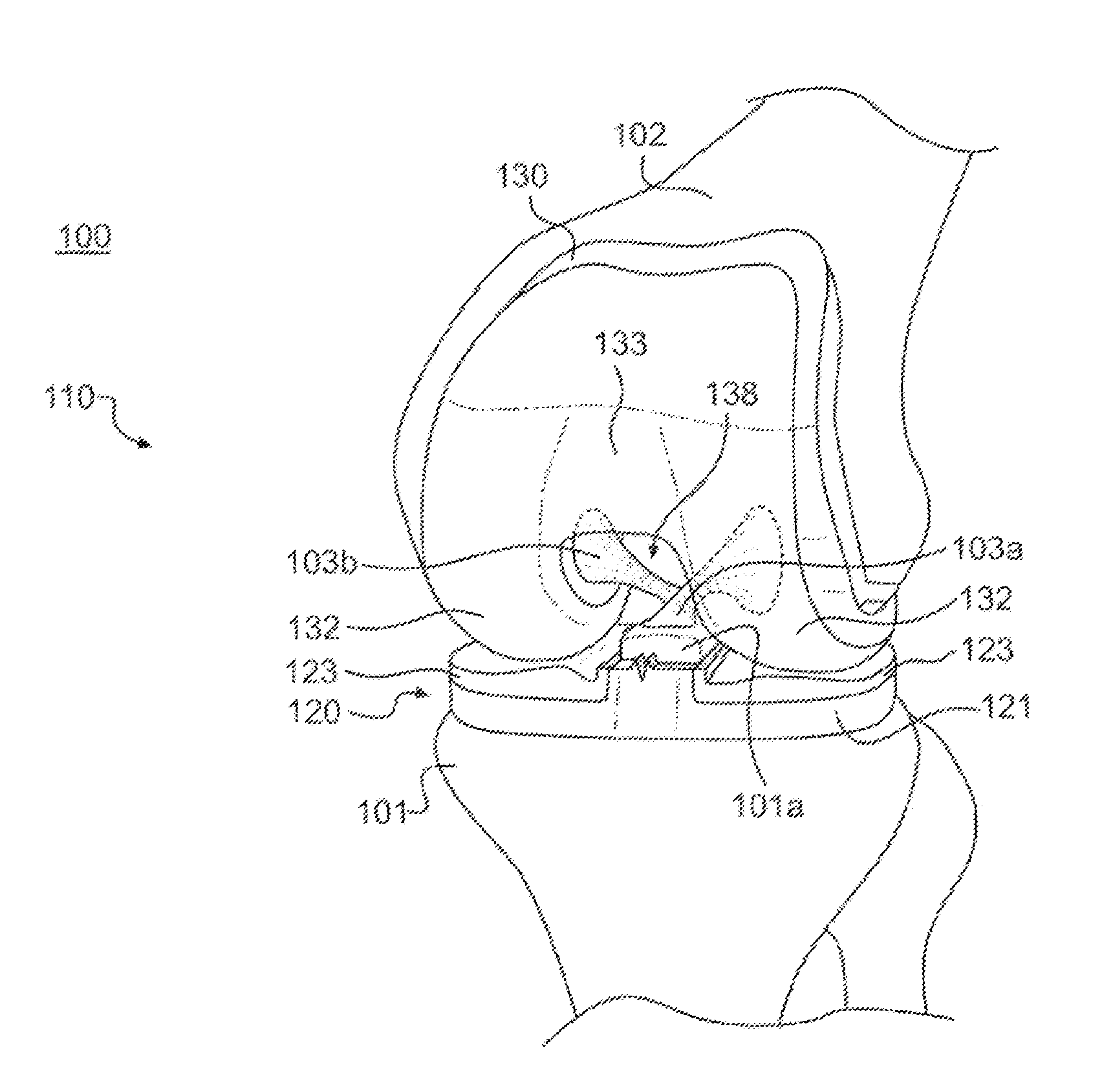Cruciate-retaining tibial prosthesis
a tibial prosthesis and cruciate technology, applied in the field of orthopaedic prosthesis systems, can solve the problems of joint pain, interference with normal use of the joint, and weak attachment strength
- Summary
- Abstract
- Description
- Claims
- Application Information
AI Technical Summary
Benefits of technology
Problems solved by technology
Method used
Image
Examples
Embodiment Construction
[0044]Reference will now be made in detail to exemplary embodiments of the present disclosure, examples of which are illustrated in the accompanying drawings. Wherever possible, the same reference numbers will be used throughout the drawings to refer to the same or similar parts.
[0045]A healthy knee joint comprises the interface between the distal end of the femur and the proximal end of the tibia. If the healthy knee joint becomes damaged due, for example, to injury or disease, knee surgery may be required to restore normal structure and function of the joint. If the damage to the knee is severe, total knee arthroplasty (“TKA”) may be required. TKA typically involves the removal of the damaged portion of joint and the replacement of the damaged portion of the joint with one or more prosthetic components.
[0046]In some TKA procedures, one or more of cruciate ligaments (including anterior cruciate ligament and / or posterior cruciate ligament) may be left intact, to be re-used with the ...
PUM
 Login to View More
Login to View More Abstract
Description
Claims
Application Information
 Login to View More
Login to View More - R&D
- Intellectual Property
- Life Sciences
- Materials
- Tech Scout
- Unparalleled Data Quality
- Higher Quality Content
- 60% Fewer Hallucinations
Browse by: Latest US Patents, China's latest patents, Technical Efficacy Thesaurus, Application Domain, Technology Topic, Popular Technical Reports.
© 2025 PatSnap. All rights reserved.Legal|Privacy policy|Modern Slavery Act Transparency Statement|Sitemap|About US| Contact US: help@patsnap.com



